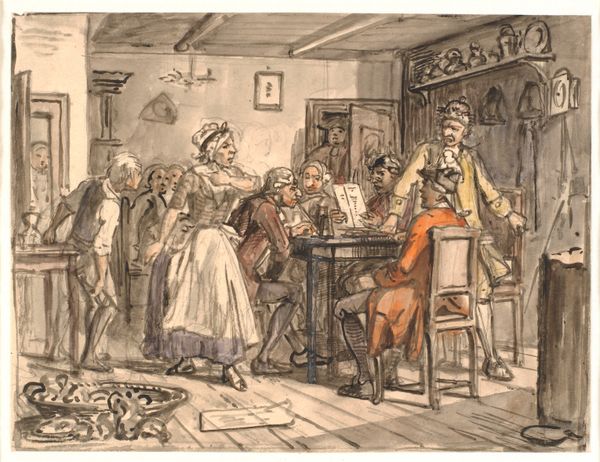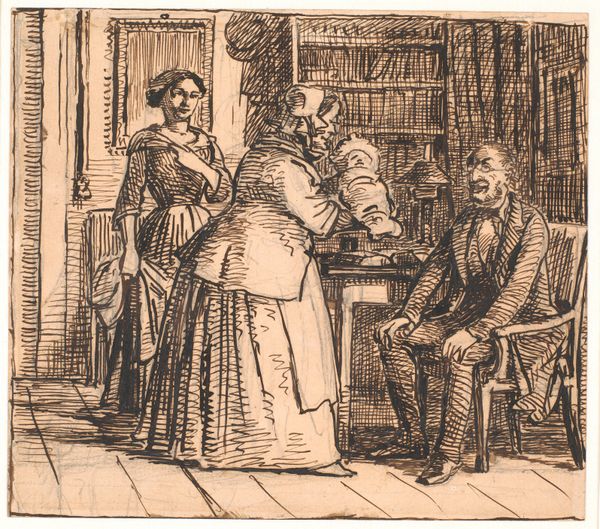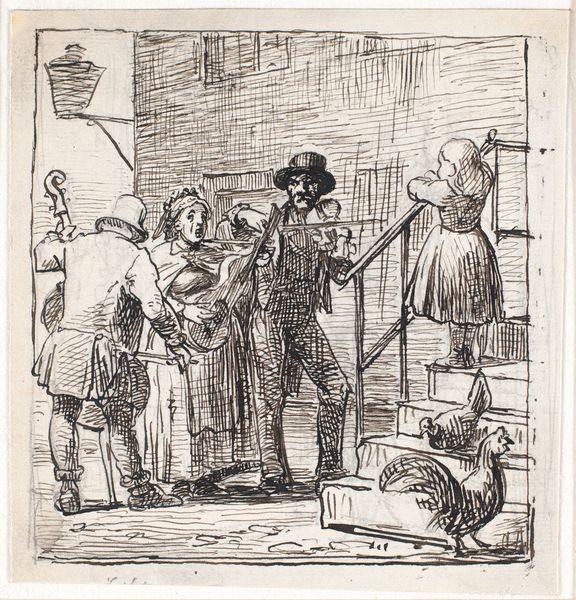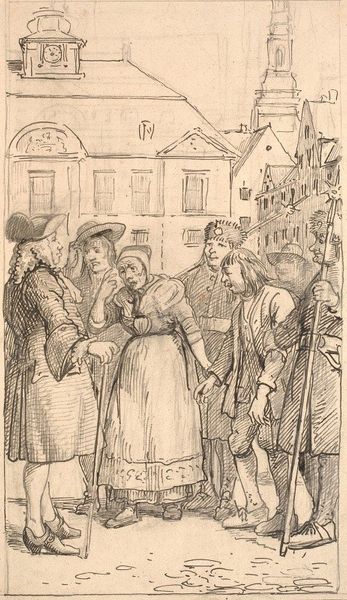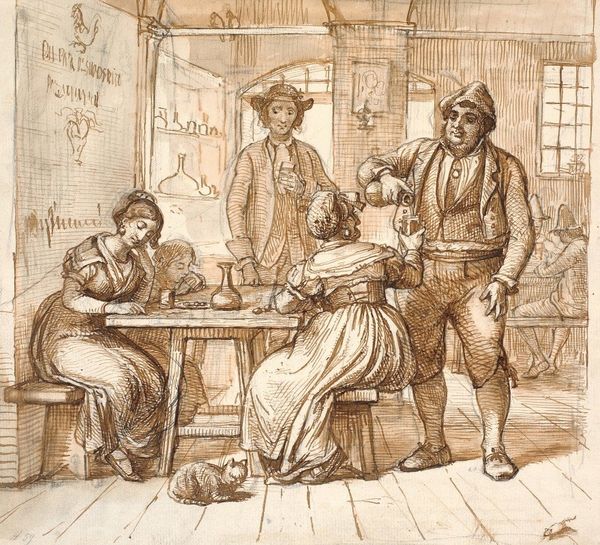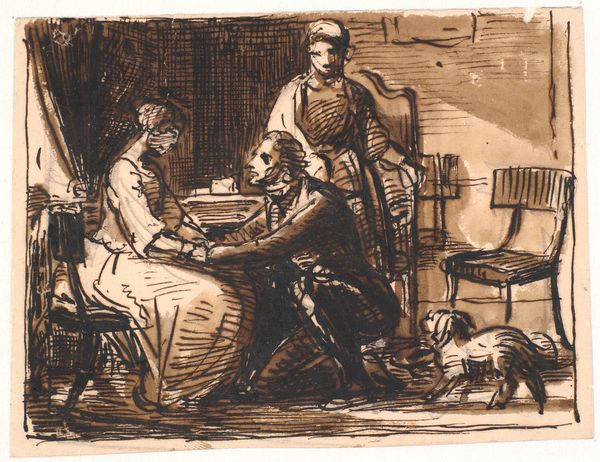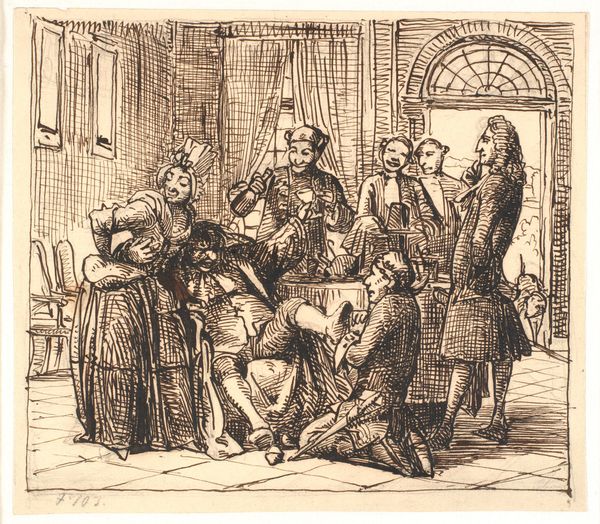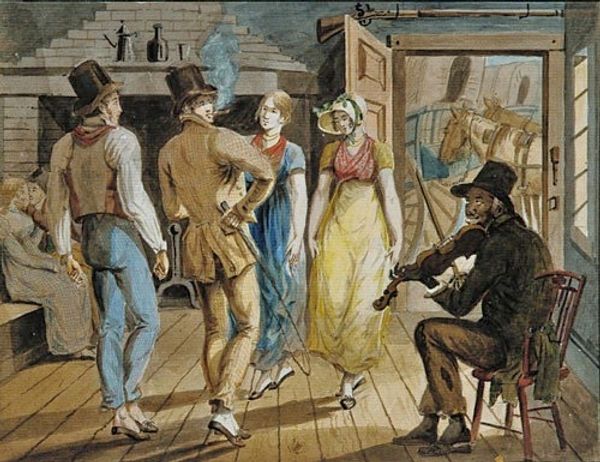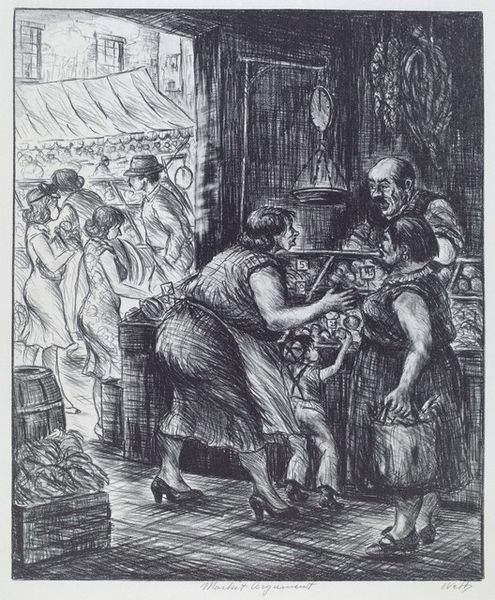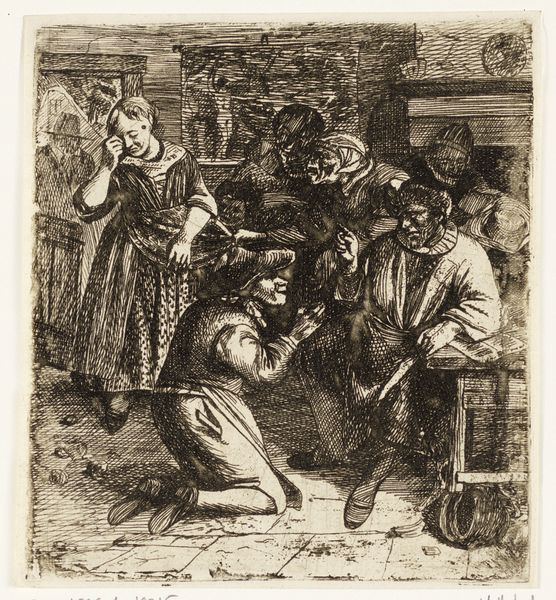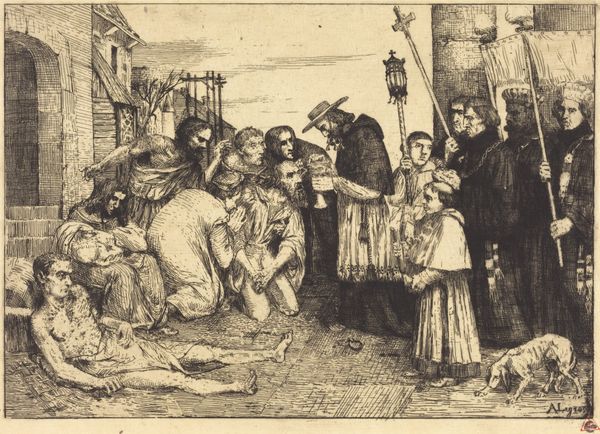
drawing, ink
#
drawing
#
figuration
#
ink
#
romanticism
#
genre-painting
Copyright: Public Domain: Artvee
Curator: Wilhelm Marstrand created this ink drawing, “Vinen prøves i kælderen” – which translates to "The wine is tasted in the cellar"– sometime between 1810 and 1873. What strikes you first about it? Editor: There’s a convivial air, a warmth despite the cool cellar setting. I see that interplay of light and shadow, and those sharply defined lines suggest figures caught in a moment of lively exchange. Curator: Indeed. Marstrand often used genre painting to both depict and comment on bourgeois life. This drawing showcases a seemingly common practice of tasting wine directly at its source. You can almost imagine the cellar being the location of civic participation in small town affairs. Editor: Notice how the wine barrel is so prominent – practically a character itself. It strikes me as not just a container, but a symbol of shared culture, of community tradition. The tasting could represent a ritual, a symbolic affirmation of connection between the people gathered there. Curator: Exactly, and Marstrand painted or drew several versions of this theme. As popular as paintings of noble families were, he wanted to turn the eye towards the customs of ordinary people in Denmark, and reflect a cultural sense of "Danishness," in the romantic era when nationalism and assertions of distinctive cultures was really emerging across Europe. Editor: And what about the attire? The figures sport somewhat comical, pointy hats. Almost clown-like... This seems to push beyond mere representation toward a lighthearted commentary on social interactions and customs, but it does leave me with the feeling that something here isn't to be taken too seriously. Curator: Marstrand definitely liked to capture human foibles, and as art moved into public life, it became very important to not simply hold a mirror up to society, but comment on what you saw in it. These kinds of satirical, witty, characterisations became immensely popular with the newly enfranchised bourgeoisie. Editor: It really highlights how everyday scenes carry significant cultural weight. So much more than just a gathering of people drinking. Curator: Agreed, and by focusing on something like wine-tasting, the drawing offers a fascinating insight into the symbolic importance of cultural traditions at a critical juncture in Danish national identity. Editor: Precisely. It reveals layers beneath the surface, inviting us to consider the deeper meanings we imbue in shared practices.
Comments
No comments
Be the first to comment and join the conversation on the ultimate creative platform.
